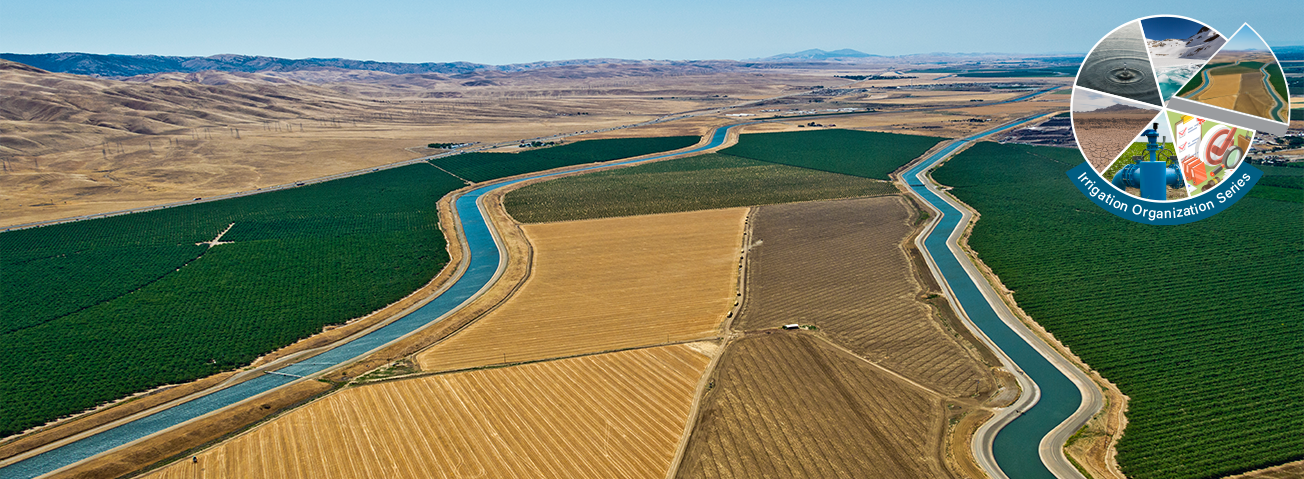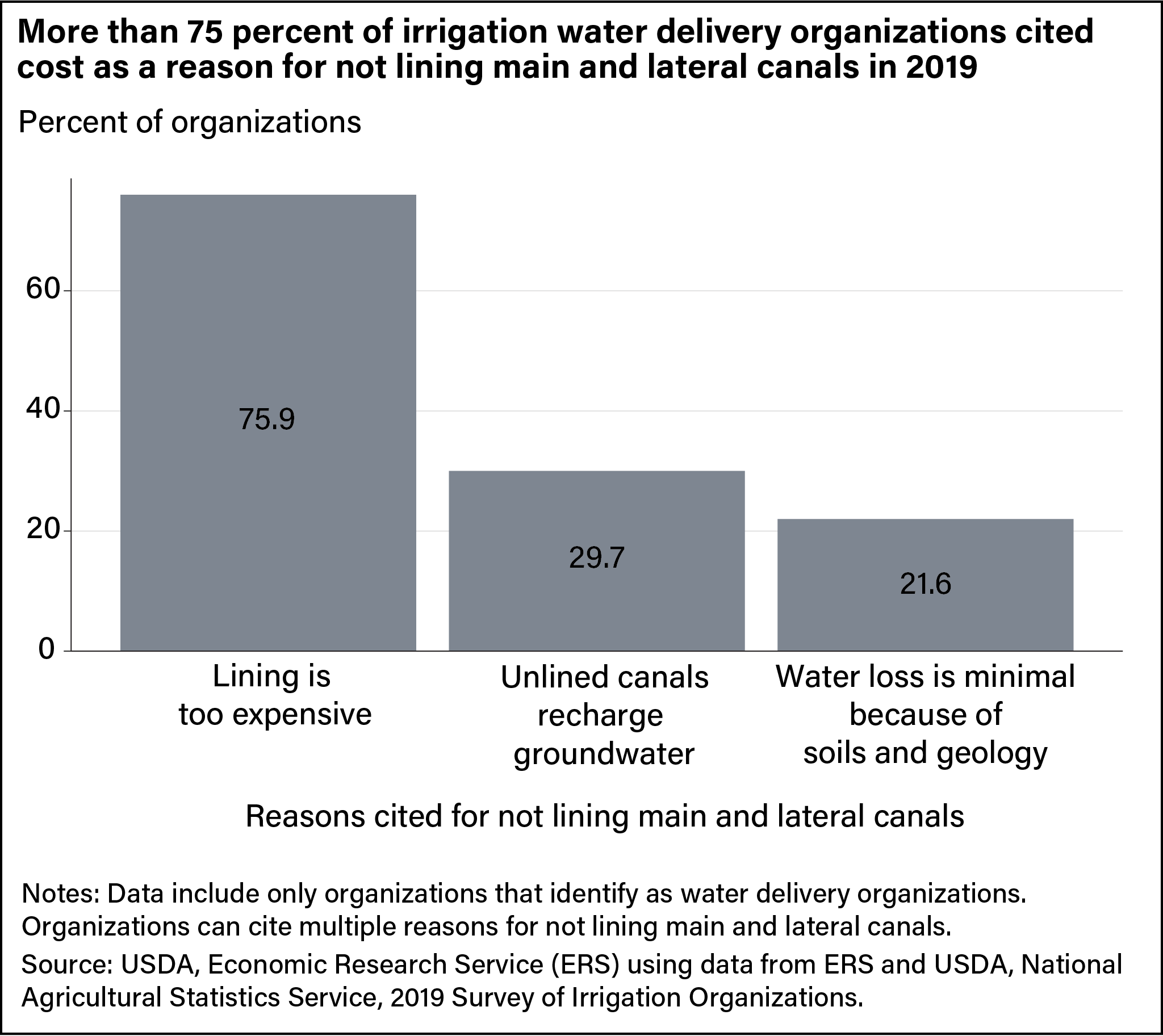
Irrigation Organizations Use Conveyance Infrastructure To Deliver Water to Irrigated Farms and Ranches
- by R. Aaron Hrozencik, Steven Wallander and Marcel Aillery
- 11/8/2021
Water resources drawn from on- and off-farm sources support agricultural production in arid regions and supplement erratic rainfall in more humid regions. According to USDA’s 2018 Irrigation and Water Management Survey, off-farm sources provide water for 28 percent of the total cropland area irrigated in the United States and account for 40 percent of total water applied to irrigated cropland. Delivering water from off-farm sources to irrigated farms requires extensive capital infrastructure to store, transport, and monitor water deliveries. Much of this infrastructure is owned by local irrigation organizations, such as irrigation districts, ditch companies, acequias (community irrigation associations), and groundwater management districts. The remaining infrastructure is owned by passthrough organizations, such as State and Federal water projects, that do not directly deliver water to farms and ranches.
USDA's Economic Research Service (ERS), Office of the Chief Economist (OCE), and National Agricultural Statistics Service (NASS) collaborated in the development and implementation of the 2019 Survey of Irrigation Organizations (SIO) to collect data on organizations that deliver water to farms or influence on-farm groundwater withdrawals. The 2019 SIO is the first nationally representative Federal data collection effort aimed at irrigation organizations since the U.S. Census Bureau conducted the 1978 Census of Irrigation Organizations.
According to SIO data, irrigation water delivery organizations in 2019 released more than 67 million acre-feet of water (1 acre-foot = 325,851 gallons) from their storage and conveyance infrastructure. Irrigation water delivery organizations delivered the majority, an estimated 41 million acre-feet, to farms and ranches. Organizations delivered another 15 million acre-feet of water to a variety of other sectors, including downstream, domestic, and industrial users, as well as other irrigation organizations. The remaining water outflows, totaling nearly 11 million acre-feet, were attributable to conveyance losses, which account for water that is lost to evaporation or seepage during storage or transport.
Lining water canals with quasi-impermeable materials such as concrete or plastic membranes can reduce conveyance losses, as less water is lost to seepage. However, a large proportion (about 72 percent) of the main and lateral canals owned by irrigation organizations remain unlined, mainly because of cost. According to SIO data, more than 75 percent of irrigation water delivery organizations in 2019 cited cost as a reason for not lining their canals.
Some water delivery organizations had other reasons for not lining their canals. Nearly 30 percent of water delivery organizations cited groundwater recharge, which allows water to seep through conveyance canals into nearby aquifers. And more than 20 percent of irrigation water delivery organizations cited soil and geologic characteristics as a reason. For example, soil with a high clay content may minimize the seepage losses associated with unlined canals.
This article is drawn from:
- Hrozencik, R.A., Wallander, S. & Aillery, M. (2021). Irrigation Organizations: Water Storage and Delivery Infrastructure. U.S. Department of Agriculture, Economic Research Service. EB-32.
You may also like:
- Irrigation & Water Use. (n.d.). U.S. Department of Agriculture, Economic Research Service.
- Marshall, E., Aillery, M., Malcolm, S. & Williams, R. (2015). Climate Change, Water Scarcity, and Adaptation in the U.S. Fieldcrop Sector. U.S. Department of Agriculture, Economic Research Service. ERR-201.
- Wallander, S., Aillery, M., Hellerstein, D. & Hand, M.S. (2013). The Role of Conservation Programs in Drought Risk Adaptation. U.S. Department of Agriculture, Economic Research Service. ERR-148.


